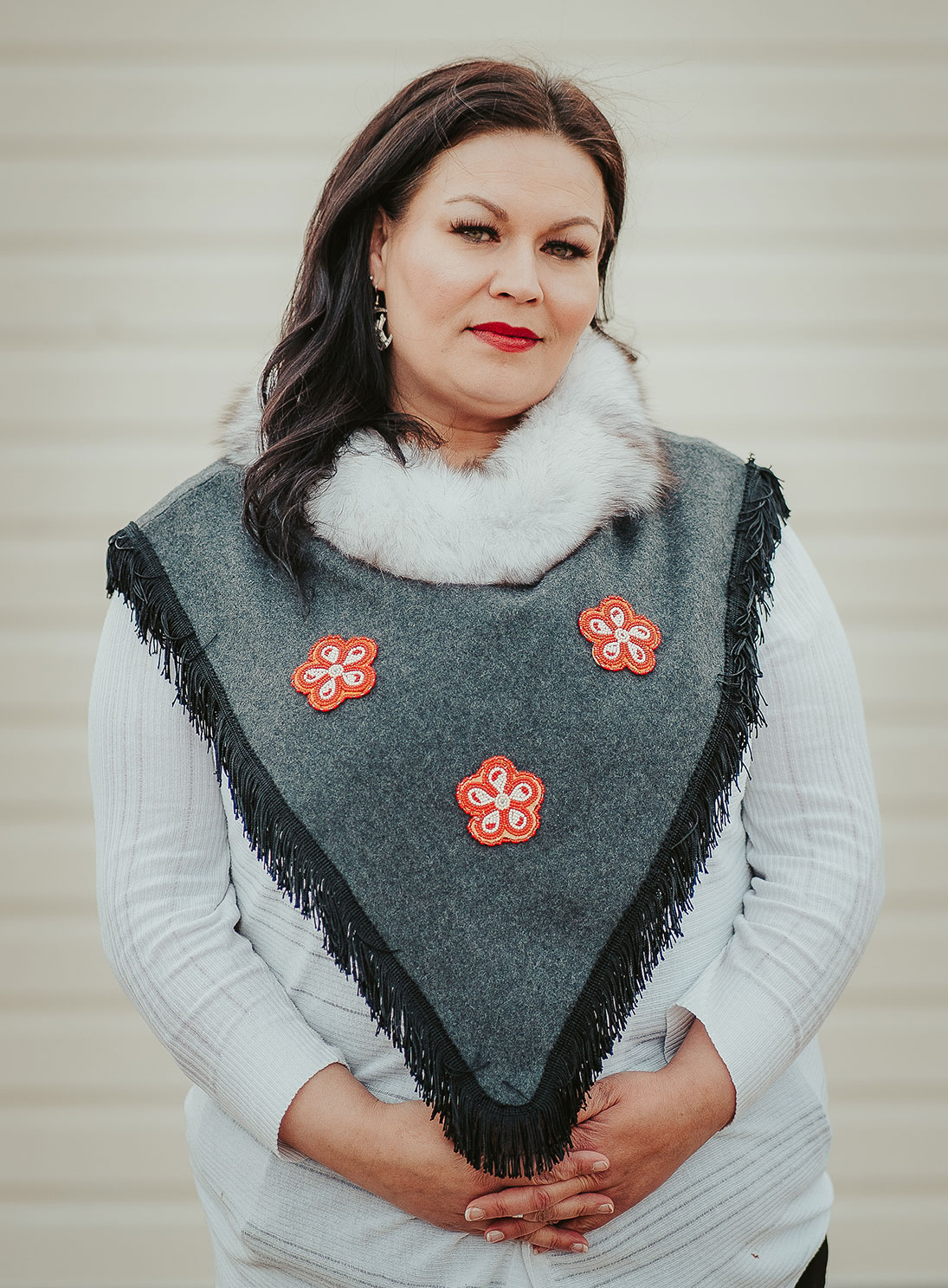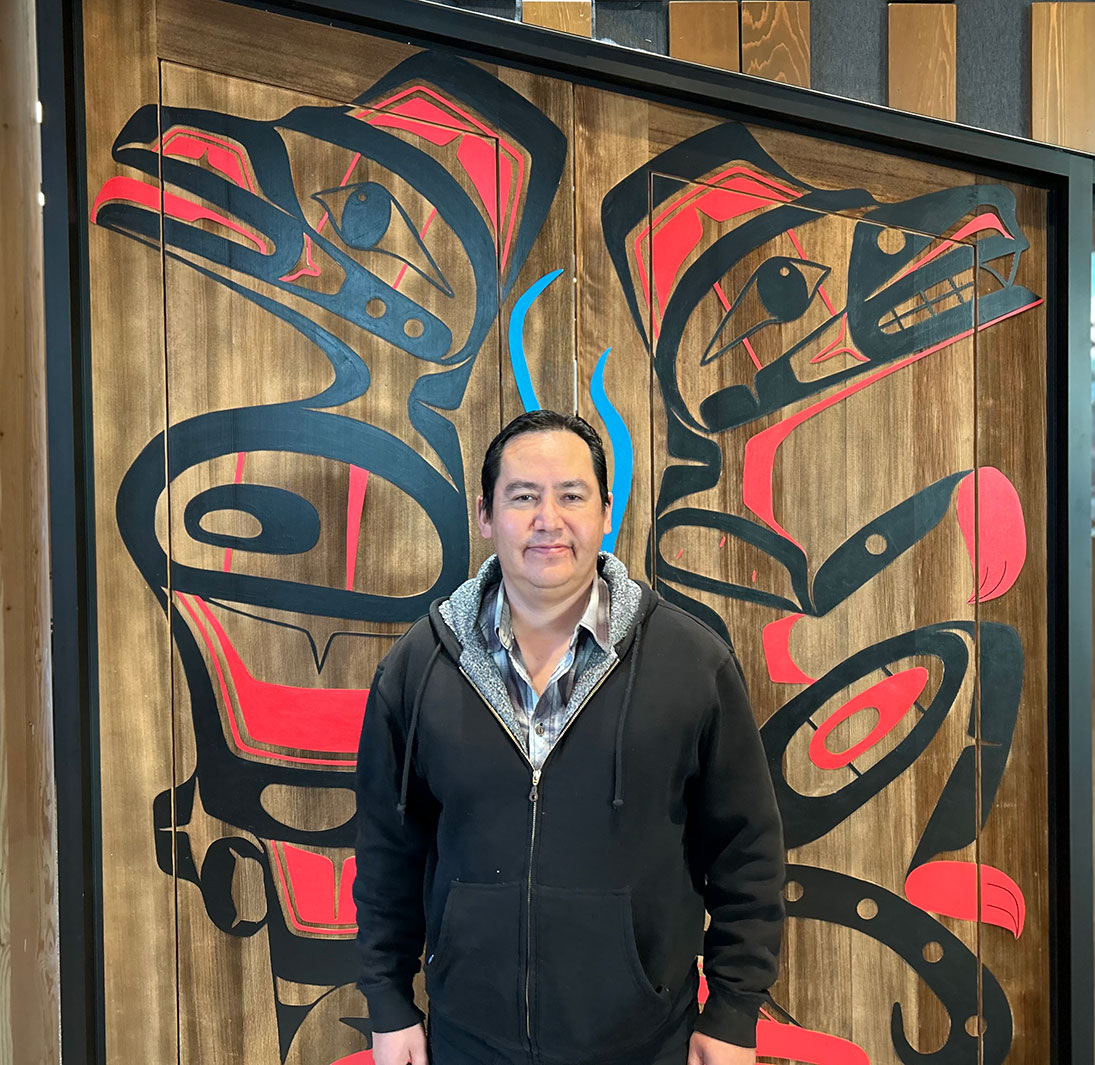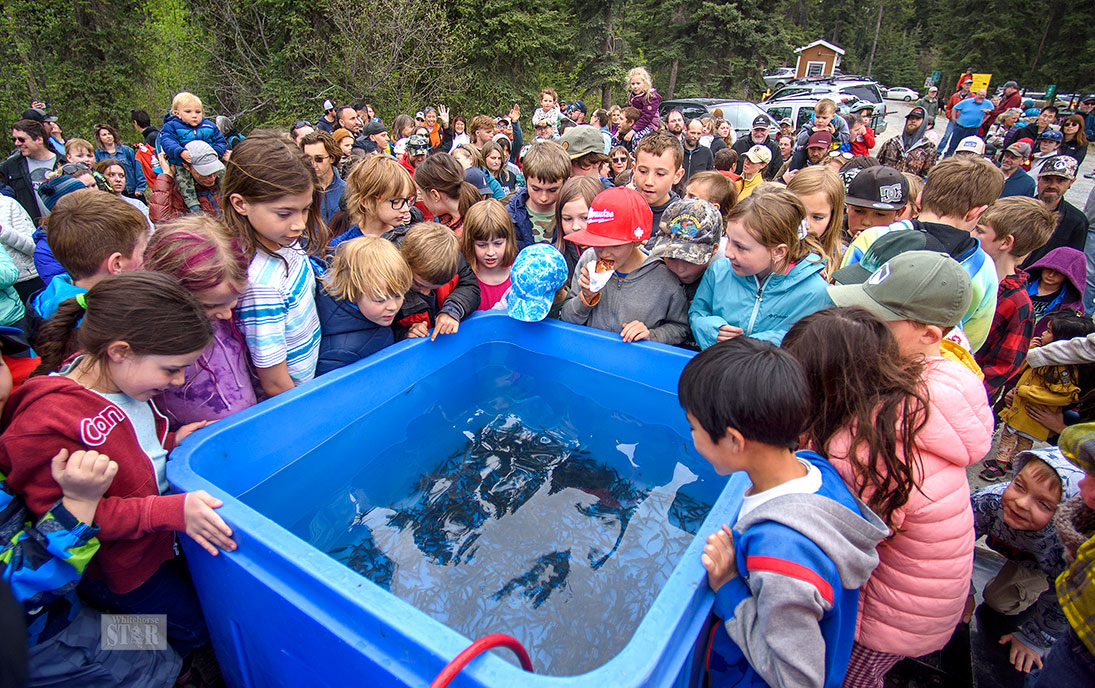
Photo by Photo Submitted
FIRST NATIONS INPUT CRUCIAL – Chief Amanda Leas of the Ta’an Kwäch’än Council says she wanted to ensure Indigenous voices were heard during the study process.

Photo by Photo Submitted
FIRST NATIONS INPUT CRUCIAL – Chief Amanda Leas of the Ta’an Kwäch’än Council says she wanted to ensure Indigenous voices were heard during the study process.

Photo by Photo Submitted
Chief Sean Smith

Photo by Vince Fedoroff
FREEING THE FRY – The crowd looks at the Yukon Fish and Game Association’s annual fry release at Wolf Creek last May.
Sometimes it seems like everything is aligned against the Yukon River’s chinook salmon population.
Sometimes it seems like everything is aligned against the Yukon River’s chinook salmon population.
A new study now estimates 27 per cent of wild juvenile chinook salmon and 23 per cent of hatchery raised juveniles are killed as they pass through the Whitehorse Rapids Dam.
“When you add that to what we already know about the decline of the overall salmon stocks, we obviously have to take immediate action,” said Chief Amanda Leas of the Ta’an Kwäch’än Council, who were part of a working group that commissioned the study.
That group also includes representatives from the Kwanlin Dün and Carcross/Tagish First Nations, along with Yukon Energy.
“The study highlights just how big of an impact both the dam and the turbines do have on our young fish,” Leas said.
News of the study comes as it was confirmed Tuesday by the Alaska Department of Fish and Game that this season will be the second-worst on record for Yukon River chinook salmon, according to their preliminary season summary.
Biologists counted 14,752 chinook salmon migrating up the Yukon River this year in Alaska near Canadian border.
The average is 51,631.
Not only that, only 152 chinook made it to the fish ladder in Whitehorse, showing that both fewer fish are entering the river and more are dying along the way.
Overfishing in the ocean, warming river waters, weakened fish that are unable to fight off parasites – these are some of the theories about what is happening.
What is clear is the decline in chinook salmon runs has fundamentally altered life for people in the Yukon, particularly those Indigenous groups who traditionally rely on harvesting salmon for subsistence, and for whom it is an integral part of their cultural identity.
“The river was red with salmon back when my elders were younger,” Leas said. “Fish is a huge part of Indigenous life.”
What the study found
The report was conducted as part of Yukon Energy’s water licence renewal and was only made public after an access-to-information request by CBC Yukon.
The three First Nations had pushed for it, and Yukon Energy obliged as part of their commitment to involving Indigenous groups in these processes.
“There has not been a whole lot of First Nation involvement in the past three licences,” Leas said. “So, we really did want to ensure that our voices were heard in the process.”
Using methods ranging from a “desktop exercise” examining what is known from similar dams to actually sending little robotic “sensor fish” through the dam’s turbines, to using sonar to count fish; researchers from the company Ecofish developed an idea of how many would survive the passage.
Work was conducted between June 28 and July 7, during what is normally peak season for juvenile fish migrating out of the area as part of a 2,800-kilometre trip through Alaska to the Bering Sea.
The dam itself was constructed in 1958, but was added to over the years, so some of its turbines are newer than others.
A fish ladder was built in 1959 to allow adult salmon swimming upstream to spawning grounds to get past the dam.
Currently, there are four turbines, a large spillway and a small fishway.
Some studies on salmon mortality were done back in 1960 and 1973, but the methods they used are unknown, casting doubt on any conclusions.
This new effort represents the first comprehensive study of what happens to those juveniles as they pass through.
The highest level of mortality was, obviously, found to be in the turbines themselves, with most sensor fish sent through badly damaged or lost.
But researchers indicated that fish passing over spillways – which are not specifically designed for fish to go over – can also be killed from the fall, from abrasion or from the turbulent conditions.
Gas and pressure changes can also have a traumatic effect on the fish.
Even fishways have problems. Other studies have shown the bunching-up of fish at the entrances and exits can invite lots of predators.
This study didn’t see a problem with it here because they only actually found 72 juvenile salmon in the first place, and none of them were in the fishway.
The study notes that because of insufficient flow to the fishway, they actually reckon little if any juvenile salmon use the structure.
Overall, the study concludes that older, larger salmon are more likely to be killed during the passage, but these older fish comprise fewer of the total.
They concluded that 26 per cent of age 0 salmon would be killed, while 33 per cent of age 1 salmon would die.
Considering the number of older wild salmon are only about 13 per cent of the total, and that hatchery salmon generally pass through when younger and smaller, the researchers arrived at the 27 per cent and 23 per cent fatality rates for wild and hatchery salmon respectively.
A cultural loss
In years past, before the dam and before the highway and before the Gold Rush, the Kwanlin Dün and the Ta’an Kwäch’än would have had fish camps up and down the river teaming with activity.
Drying salmon would be hanging everywhere.
“We have fish camps for drying and canning and preserving – as you know we have very long winters and that was one of our main staples,” Leas said.
These were places for family gatherings and for knowledge to be passed down through the generations, with grandparents, parents, aunts and uncle – everyone participating.
It’s now been more than two decades since the Kwanlin Dün and Ta’an Kwäch’än began restricting salmon harvesting.
“My children are in their late teens and early 20s, and I have been not been able to teach them how to catch and harvest and preserve salmon,” Leas said.
Now all they can do is buy salmon to try to hold on to these traditions.
She said the Ta’an Kwäch’än are now forced to buy fish for fish camps so they can still carry that tradition on.
“But not in a way that we grew accustomed to when we were younger,” she said.
Chief Sean Smith of the Kwanlin Dün connected the history of residential schools and the inability of young Indigenous children to attend fish camps as the start of the severing of the generational passing down of traditional knowledge.
“People weren’t able to practise that important, seasonal harvesting from the land,” Smith said in an interview with the Star on Thursday.
Now, they don’t even have the possibility because there is no fish to harvest.
“In modern times, that identity is very important to continue to build upon and reclaim a lot of these things that were fragmented when colonization occurred,” Smith said.
What can be done now
Problems seem to be occurring throughout the chinook salmon’s life cycle.
From unnaturally warm river waters, to overfishing and other disruptions in the ocean, to an increase in parasitic infection when they return to the river – chinook salmon are being assaulted on all fronts.
“People have described the Yukon River chinook run as spiralling towards extinction,” said the Yukon Conservation Society’s Sebastian Jones, who is also a board member on the non-governmental advisory Yukon Salmon Sub-Committee. “And it really is.”
It was decided in 1984 to create a fish hatchery to offset young salmon dying in the turbines, with as many as 100,000 salmon fry being raised to be released in Michie and Wolf Creeks, upstream from the dam.
But Jones said hatcheries have not proved to be a viable permanent solution here or elsewhere.
“Everything that we know about hatcheries says they cannot replace natural bio habitat and spawning,” he said.
“What they can do is that they can temporarily bolster a stock while the conditions that are causing them problems are addressed.”
Even though the hatcheries are producing up to 100,000 salmon fry, Jones says the success rate for those salmon returning to reproduce could be as low as five to seven per 3,000 fry in good conditions and may be as low as one per 3,000 with all the other issues going on now.
This could mean those 100,000 hatchery fish result in something like 35 fish returning to spawn.
There are so many variables, it is hard to know for sure what the success rate actually is, but this year only 152 chinook were counted passing through the fish ladder at the dam.
The fact that Yukon Energy is just now addressing such a crucial step in making this journey to and from the ocean – the baby salmon getting through the dam – is a huge problem, Jones says.
“This dam has been in place since 1958,” Jones said. “And we’re just now starting to get a handle on how many juvenile fish are dying as they go through the dam.”
He applauded the three First Nations for forcing the undertaking of this study.
“Thank goodness for the First Nations pushing it,” he said. “It’s appalling that the utility didn’t do that itself decades ago.”
Jones does acknowledge the difficulty of providing renewable energy that is consistent and not weather-dependent.
“I have some sympathy for Yukon Energy,” Jones said. “Keeping the electricity flowing at the right rate is bewilderingly difficult.”
Michael Muller, Yukon Energy’s vice-president for planning, environment and health and safety, touched on these conflicting priorities as well.
“We have a role as a utility to generate power for Yukoners so that when it’s cold and dark in the middle of the winter, people’s lights and people’s electronic baseboard heaters go on,” he told the Star on Tuesday.
“But we also recognize that we have broader goals and broader responsibilities.”
He said they are now committed to collaborating with the local First Nations to address their priorities, one of which is better protecting salmon stocks.
“We’re trying to do what’s best for the fish,” Muller said.
For Smith, Jones and Leas, the results of this study were not a surprise, and the issue was clear for some time.
“Looking at the amount of water that flows through the dam, and the pressure and those kinds of things, it doesn’t surprise me,” Smith said. “We’ve been aware of this issue for many years.”
The report makes several recommendations, but also says still more information is also needed.
Researchers would first like to be able to figure out why they were only able to count so few salmon with their sonar equipment.
They hypothesized this could have been a result of being there at the wrong time, or could have been a problem with their methods.
They also didn’t get a chance to send any sensor fish through one of the turbines or over the spillway because they kept getting lost or broken.
“We need to know a little bit more,” Muller said. “And the report talks about the kinds of things that we would need to know before we can talk about mitigation or before we can talk about options to help the fish choose paths that are less hazardous for them.”
The Star was unable to contact study author William Twardek, as he is away on paternity leave.
Muller wants to do more studies, and is planning on providing more details as they go through the process for renewing the water licence.
Chief Smith of the Kwanlin Dün would like to see some interim steps taken.
“I’m a strong believer in action and taking steps,” he said.
He gave a couple of ideas, including making alterations to the fish ladder, creating a salmon stewardship centre and doing more work to enhance spawning grounds.
“We can scratch our heads and have another study,” he said. “But a study of what we already know?”
In order to encourage thoughtful and responsible discussion, website comments will not be visible until a moderator approves them. Please add comments judiciously and refrain from maligning any individual or institution. Read about our user comment and privacy policies.
Your name and email address are required before your comment is posted. Otherwise, your comment will not be posted.
Comments (3)
Up 1 Down 1
Mike Grieco on Nov 14, 2023 at 9:47 pm
Do a "study" on whether or not the water is wet, why don't you??
Up 34 Down 6
Max Mack on Nov 14, 2023 at 4:04 pm
I would love to comment, but the story involves FN entities . . . so any critical comments will be blocked.
Sad state of affairs with Whitehorse Star comment moderation.
Up 15 Down 30
Gordon Fisher on Nov 11, 2023 at 4:21 pm
Fish are important to all. I am so glad first nation's are doing all they can to help the fish.